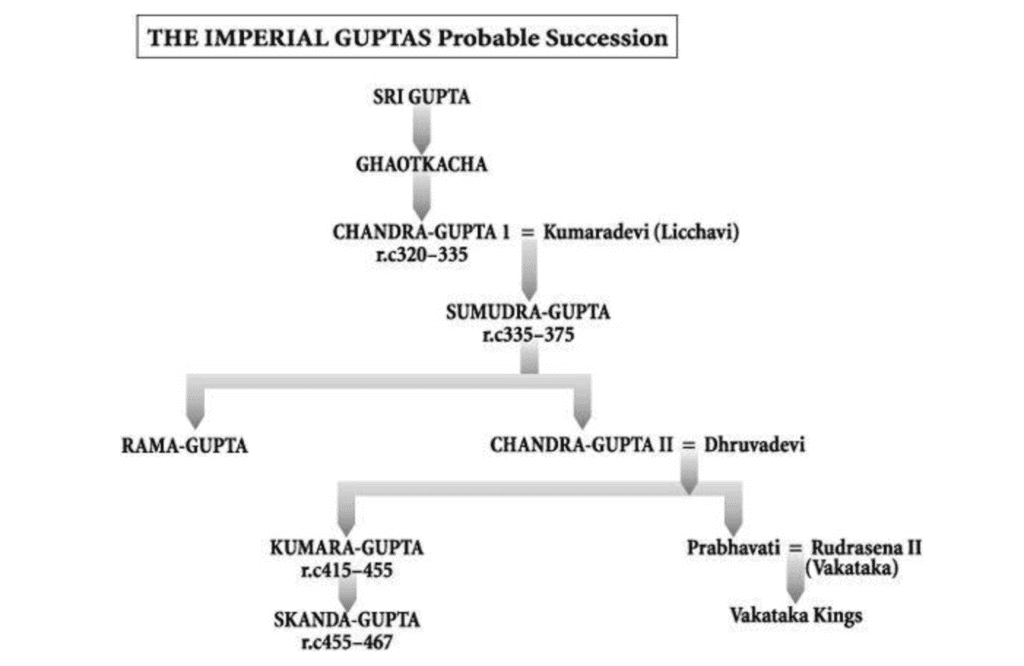Class 6 History Chapter 7 Question Answers - From a Kingdom to an Empire
Very Short Q & A :
Q1: Who started the policy of Dhamma?
Ans: Ashoka
 King Ashoka
King Ashoka
Q2: What was Dhamma?
Ans: A code of conduct
Q3: The Prakrit language gave birth to the _______ language.
Ans: Pali
Q4: What was the purpose of following the policy of Dhamma?
Ans: Ashoka followed this policy to uplift the morals of his subjects, although he did not declare Buddhism as the state religion.
Q5: "Dhamma" is the Prakrit word for the Sanskrit term "Dharma." True/False
Ans: True
Q6: Ashoka was inspired by the teachings of ____________.
Ans: Buddha
Q7: When did Ashoka's inclination towards Buddhism develop?
Ans: After the Battle of Kalinga, he gradually became a follower of Buddhism and adopted the path of non-violence.
Q8: From where was the term 'Dhamma' taken?
Ans: Prakrit language
Q9: Who constructed the Great Wall of China?
Ans: The emperors of China built this wall.
Q10: In which language were the rock edicts written?
Ans: The rock edicts were written in Brahmi script and Prakrit, which was the language of the common people.
Q11: Why was the Great Wall of China constructed?
Ans: The wall was constructed to protect Chinese culture from invaders.
Q12: The Great Wall of China had a system in which, at every 100-200 meters, there was a ___________.
Ans: Watchtower
Q13: What is a watchtower?
Ans: A watchtower is a type of fortification used in many parts of the world. It differs from a regular tower, as it is a free-standing structure.
Q14: The city of Ujjain is located on the route from _______ to ________.
Ans: North to South
Q15: Name the emperor who was the grandfather of Ashoka.
Ans: Chandragupta Maurya

Q16: Name the three important rulers of the Mauryan dynasty.
Ans: The Mauryan dynasty had three important rulers—Chandragupta Maurya, his son Bindusara, and his son Ashoka.
Q17: Name the wise man present in Chandragupta Maurya's empire.
Ans: Chanakya
Q18: What was the other name of Chanakya?
Ans: Kautilya
Q19: Two years after the Kalinga War, Ashoka inscribed his message on the Sarnath pillar. True/False
Ans: True
Q20: Name a prosperous kingdom lying between the rivers Godavari and Mahanadi.
Ans: Kalinga
Q21: How were empires different from kingdoms?
Ans: Empires were larger than kingdoms.
Q22: Which of the two was larger—an empire or a kingdom?
Ans: Empire
Q23: From whom did the emperor collect taxes?
Ans: Farmers, herders, and craftspersons.
Q24: Name the book from which the administration of the Mauryan Empire is known.
Ans: Arthashastra
Q25: What do you mean by Arthashastra?
Ans: Arthashastra is a book that contains the ideas of Chanakya regarding the administration of that period.
Q26: The person who deciphered the Brahmi script was an employee of the _____________________.
Ans: East India Company
Q27: What is the modern name of Pataliputra?
Ans: Patna
Q28: Name the ruler who tried to convey his message to the people through inscriptions.
Ans: Ashoka
Q29: What was the ancient name of coastal Orissa?
Ans: Kalinga
Q30: Why did Ashoka decide to give up wars?
Ans: He was horrified by the violence and bloodshed caused by wars.
Q31: Name a gateway to the northwest, including Central Asia.
Ans: Taxila
Q32: The administration of important Mauryan provinces was placed under the control of _____________.
Ans: Royal princes
Q33: Ashoka appointed special officials who were known as ______________.
Ans: Dhamma Mahamatta
Q34: Dhamma Mahamatta went from place to place to spread the concept of Dhamma. True/False
Ans: True
Q35: Name one of the capitals of the Mauryan Dynasty, apart from Ujjain and Pataliputra.
Ans: Taxila
Q36: According to Megasthenes' description of Pataliputra, it had _________ towers and ____ gates.
Ans: 570 towers and 64 gates.
Q37: There are around 41 cities where inscriptions and edicts were found. True/False
Ans: False
Q38: During the Mauryan period, royal princes were appointed as ______________.
Ans: Governors
Q39: Seleucus Nicator belonged to ___________.
Ans: Greece
Q40: Name the region that was popular for the production of blankets during the Maurya period.
Ans: Northwest
Q41: Name the city described in detail by Megasthenes.
Ans: Pataliputra
Q42: The lions that we see on our currency notes and coins are taken from the Ashoka pillar located at _____________.
Ans: Sarnath
Q43: The empire inherited by Ashoka was founded by his grandfather. True/False
Ans: True
Q44: Name the person who helped Chandragupta establish the Maurya dynasty.
Ans: Kautilya
Q45: Which area was under the direct control of the emperor?
Ans: The area around Pataliputra was under the direct control of the emperor.

|
3 videos|69 docs
|
FAQs on Class 6 History Chapter 7 Question Answers - From a Kingdom to an Empire
| 1. What are the key differences between a kingdom and an empire? |  |
| 2. How did kingdoms transition to empires historically? |  |
| 3. What role did trade play in the expansion of empires? |  |
| 4. What are some examples of famous empires that originated from kingdoms? |  |
| 5. What were the social and cultural impacts of transitioning from a kingdom to an empire? |  |

















